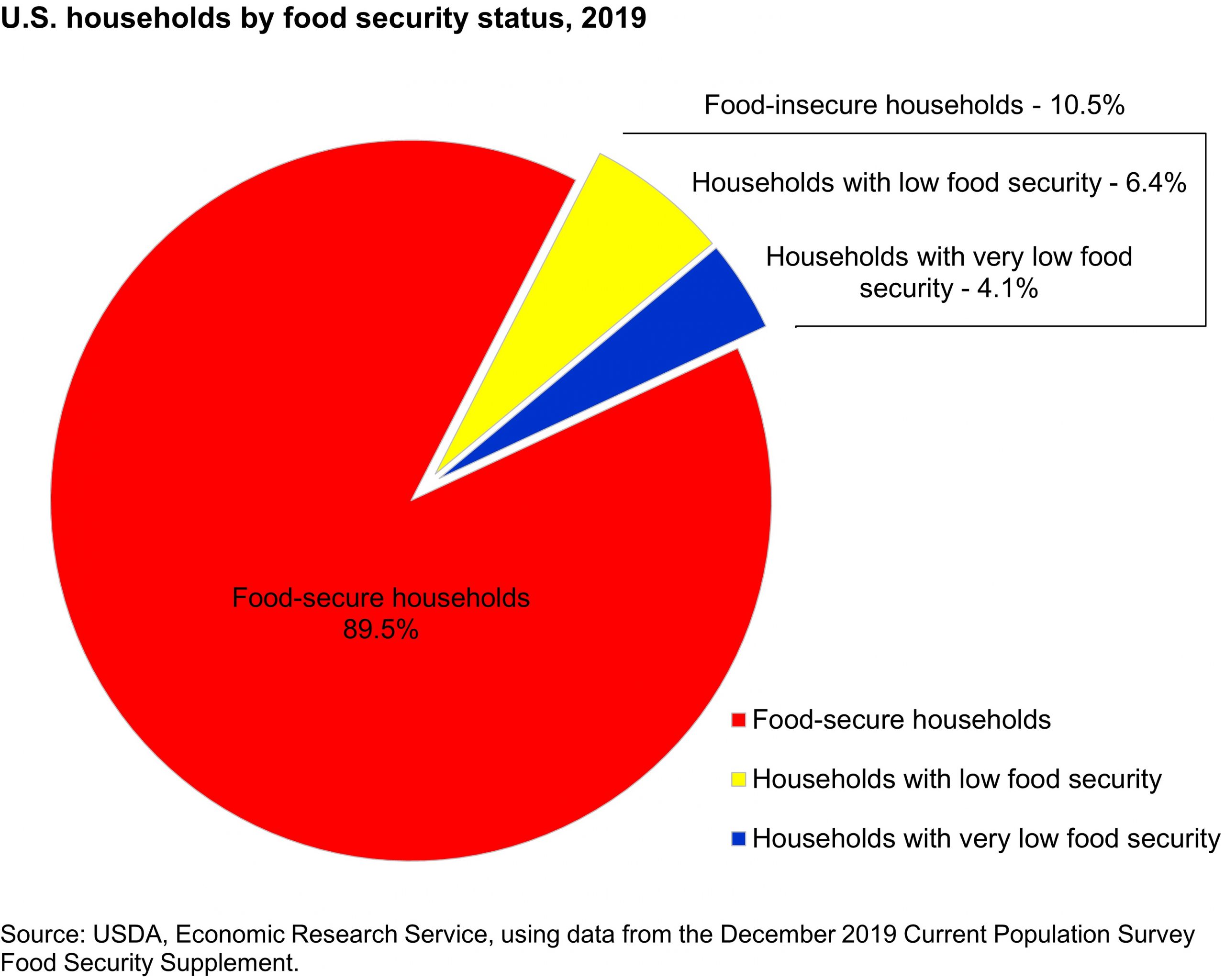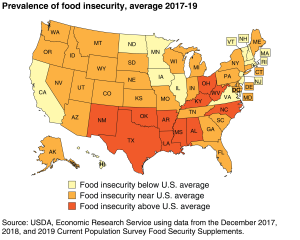Food Insecurity: An Introduction
1.1 What is Food Insecurity?
“There are people in the world so hungry that God cannot appear to them except in the form of bread.”
-Mahatma Gandhi
Physiologically, hunger is the body’s response to a need for nourishment. Through stomach discomfort or intestinal rumbling, the body alerts the brain that it requires food. This uneasy sensation is easily addressed with a snack or a full meal. However, the term “hunger” also relates to a weakened condition that is a consequence of a prolonged lack of food. People who suffer from this form of hunger typically experience malnourishment, along with poor growth and development. Hunger and malnutrition occur in every country in the world. At the same time some people are hungry, it is estimated that more than 30% of food in the US is thrown away uneaten.
Learning Objectives
- Define food security and food insecurity including the various levels of insecurity.
- Describe who is affected by food insecurity in the US and the world and why.
- Define food deserts and food swamps.
- Differentiate among programs in the US that address food insecurity.
- Describe the problem of food waste and interventions for its reduction.
Adequate food intake that meets nutritional requirements is essential to achieve a healthy, productive lifestyle. The United Nations Food and Agriculture Organization (FAO) estimates that approximately 815 million people (or 10.7%) of the 7.6 billion people in the world suffered from chronic undernourishment in 2016. Almost all of these hungry people live in lower and middle-income countries.1 However, millions of people in North America go hungry and are malnourished each year due to a recurring and involuntary lack of food. The economic crisis of 2008 caused a dramatic increase in hunger across the US as did the Covid-19 pandemic in 2020-21. According to Feeding America (a non-profit organization), more than 54 million people may have experienced food insecurity in 2020, and as many as 18 million were children. That’s up from 37 million in 2018. Rural, urban, and suburban communities contain people who lack access to adequate healthy foods, and many who are hungry do not qualify for federal aid to help them feed themselves and their families.2
Key Hunger Terms
A number of terms are used to categorize and classify hunger. Two key terms, food security and food insecurity, focus on status and affect hunger statistics. Most American households (~89%) are considered to be food secure, which means they have adequate access to food and consume enough nutrients to achieve a healthy lifestyle. There is a continuum of food security in the US ranging from high to very low (Table 1.1.1). A minority of US households in 2018 experienced low food security (about 1 in 9 people; 14 million households) at certain points during the year, and some had very low food security (about 1 in 25; 5.6 million households) which means their access to food is significantly and chronically limited due to a lack of money or other resources. Rates of low and very low food insecurity are higher for households with very low income, especially those with children headed by a single parent, women or men living alone, households in principal cities, and Black- or Hispanic-headed households.3

Table 1.1 Definitions of Food Security4
| Type of Food Security | Definition |
| High | No reported indications of food access problems or limitations. |
| Marginal | One or two reported indications—typically of anxiety over food sufficiency or shortage of food in the house; little or no indication of changes in diets or food intake. |
| Low | Reports of reduced quality, variety, or desirability of diet. Little or no indication of reduced food intake. |
| Very Low | Reports of multiple indications of disrupted eating patterns and reduced food intake. |
The FAO uses a Food Insecurity Experience Scale (FIES) to measure food insecurity.5

Households with limited resources employ a variety of methods to increase their access to adequate food. Some families purchase junk food and fast food—cheaper options that typically consist of high energy, low nutrient dense options. Other families who struggle with food security supplement the groceries they purchase by participating in government assistance programs. About 56% of food insecure households reported using a federal nutrition assistance program like the Supplemental Nutrition Assistance Program (SNAP), Special Supplemental Nutrition Program for Women, Infants, and Children (WIC), or the National School Lunch Program during the past month.3 They may also obtain food from emergency providers, such as food banks, food pantries, and/or soup kitchens in their communities.

Malnutrition
A person living in a food insecure household may suffer from malnutrition, which results from a failure to meet nutrient requirements. This can occur as a result of consuming too little food or not enough key nutrients. There are two basic types of malnutrition. The first is macronutrient deficiency and relates primarily to the lack of adequate protein, which is required for cell growth, maintenance, and repair. The conditions marasmus and kwashiorkor, discussed in Chapter 6, are examples of this type of malnutrition. The second type of malnutrition is micronutrient deficiency and relates to inadequate vitamin and mineral intake.1 Often called “hidden hunger” because their effects may not be obvious, these micronutrient deficiencies can have multiple and lasting effects. The most commonly deficient micronutrients with long term consequences are vitamin A, iron, and iodine.6 People who consume adequate calories and protein can suffer from this type of micronutrient malnutrition if they eat foods that do not meet all of their nutritional needs.implementation-guide-and-toolkit#docs
